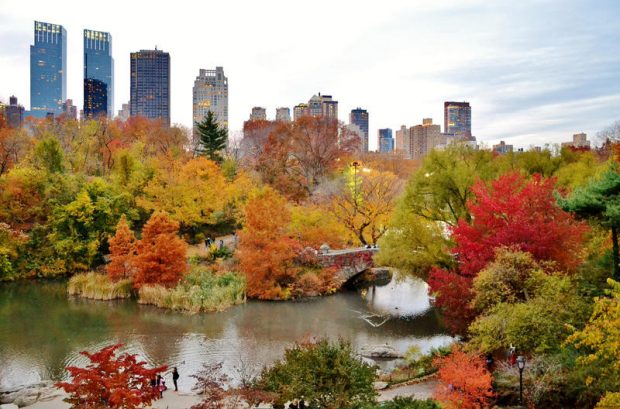
Central Park has almost 20,000 trees of various varieties, including oak, elm, cherry, maple, and many others. This diversity makes the park one of the most attractive places to enjoy the golden autumn without leaving New York City.
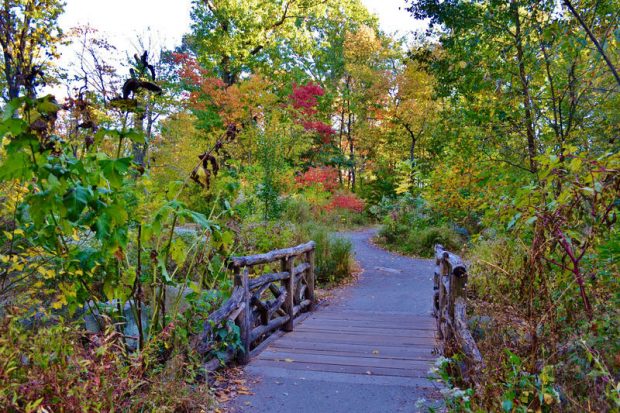
Inhabited by black cherries, oaks, red maples, and American elm trees, North Woods stretches from the west to the middle of the park from 101st to 110th Streets.
In autumn, they become red-yellow: American elm leaves, black cherry leaves, and red oak are yellow. You can see while maple leaves and Pin and Scarlet oak varieties play different shades of red, bronze, and brown. North Woods is one of the three forest areas of Central Park.
READ: The 6 Best Food on Foot Tours in New York: Free Entry with the New York Pass
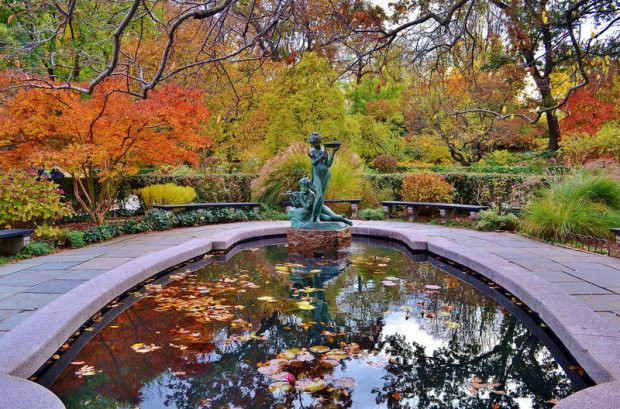
The six hectares of the Conservatory Garden are as bright and colorful in the autumn as in the spring.
In the autumn season, the alleys of the garden become reddish-orange, and workers planted them with beautiful chrysanthemums. Conservatory Garden is the ideal place for a relaxing holiday on a clear autumn day.
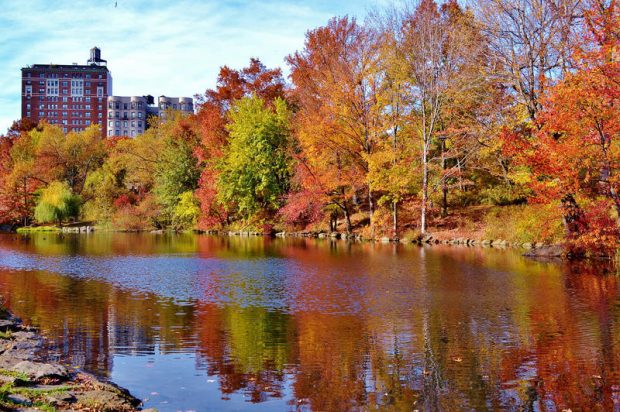
Red maples, hickories, tupelos, cypresses, and sugar maples. Everything surrounds the Pool animate it with the bright colors of their leaves.
Reflected in water shades of red, yellow, red, and orange make the place fantastically beautiful. Admiring the foliage, you can also admire the wildlife of the park, including turtles, birds, and fish.
READ: VR Park: Virtual Reality Can be Experienced in the VR Park Dubai
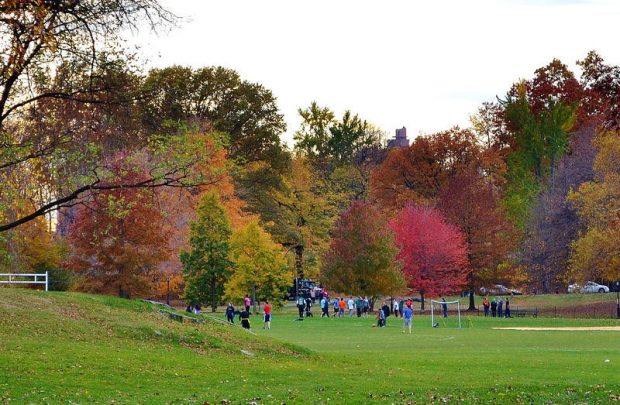
North Meadow is 23 hectares of lawn, rocks, and hills stretching from 102nd Street to 97th Street.
It is here that visitors will find seven baseball fields of the park, five softball fields, six seasonal football fields with football balls, sugar maples, and stunning trees Flowering Dogwood. As the season progresses, maple leaves acquire orange and red shades, while Flowering Dogwood leaves become dark maroon and purple.
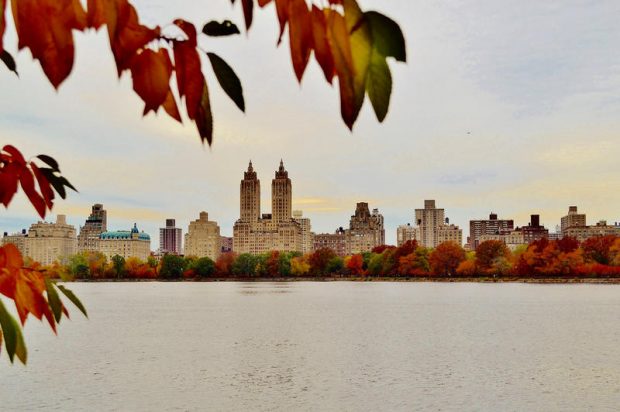
Central Park Reservoir was built for the temporary water supply of the city in the 1860s. Now it is one of the best places in the park to enjoy the autumn.
The Kwanzaa Cherry trees on the west side and the Yoshina cherry trees on the east side become bright red, bronze, and yellow in the autumn, providing a beautiful view when you run or walk on the 1.58 km road, that loops around the water. The reservoir is 40 feet deep and covers almost the entire width of the park from 85th Street to 96th Street.
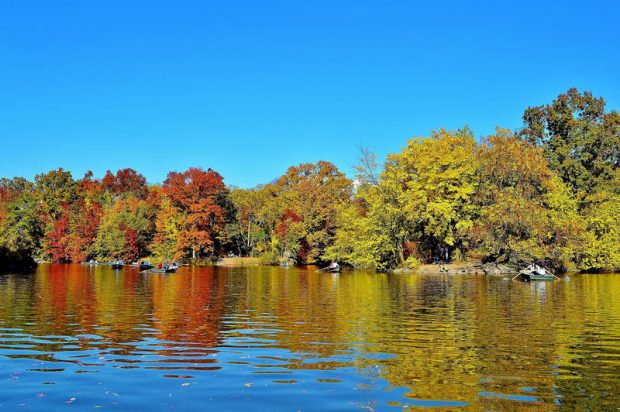
Ramble is 36 acres of what the landscape architect of Central Park Frederick L. Olmstead called the «wild gardens», stretching from 73rd to 79th streets in the center of the park.
This area is lined with red oaks, Sweet Gum trees, sassafras, red maples, black cherries, and tupelo trees. The entire autumn color palette, from red and orange, from red and yellow to bronze and purple.
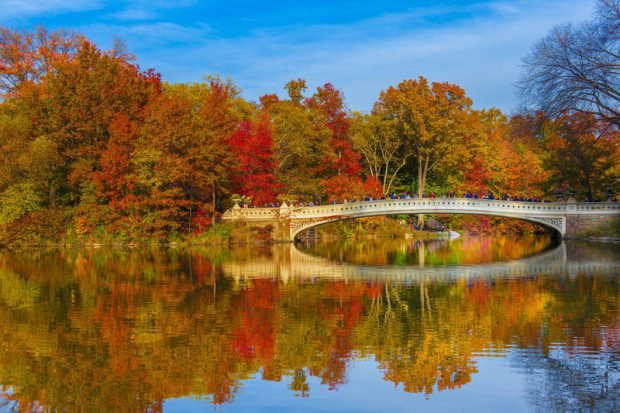
The fire colors of the Central Park trees reinforce the romance of the park in autumn, and there are several places on the lake that are more romantic than Bow Bridge.
Twenty acres of the lake is the largest natural water in the park. The bright leaves reflected in the water provide this corner of the park with stunning beauty during the autumn.
READ: The Best Low Budget Restaurants in New York: Insider Tips
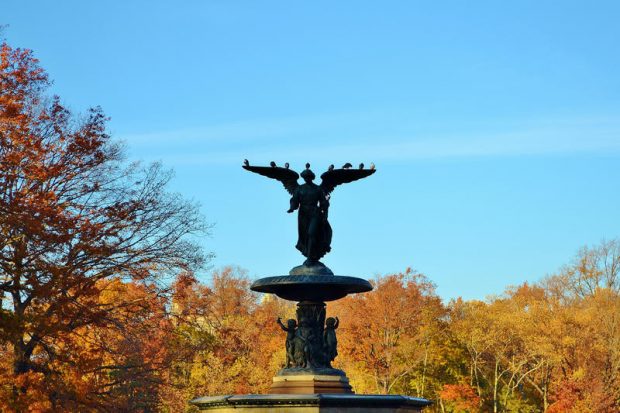
On Bethesda Terrace, you can see one of the most iconic fountains in New York, surrounded by some of the city’s most beautiful foliage.
You can easily recognize the place from the Bethesda Fountain, with the Water Angel at the top – a figure that personifies the Croton water system. For the first time, clean water was supplied to the city thanks to this system in the 19th century. The monument was at that time the only statue ordered for the park.
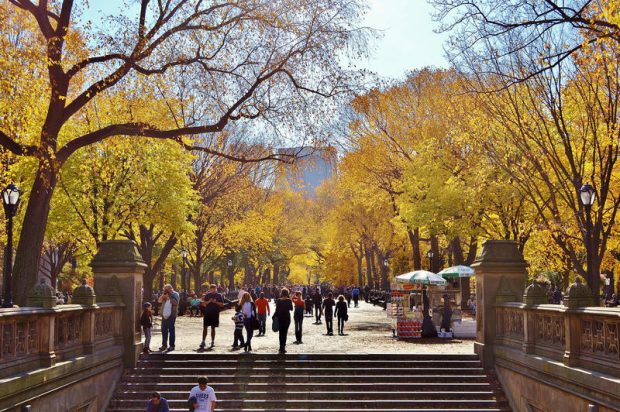
The Mall runs through the middle of the park from 72nd to 66th Streets and is the widest pedestrian walkway in the park. Along this path, rows of American elms grow, some of the largest remaining in the country.
In autumn, the leaves of these trees burn yellow. The mall is the only formal part of the naturalistic design of the park and the only deliberate straight line within the park. The alley itself leads to the Bethesda Fountain.
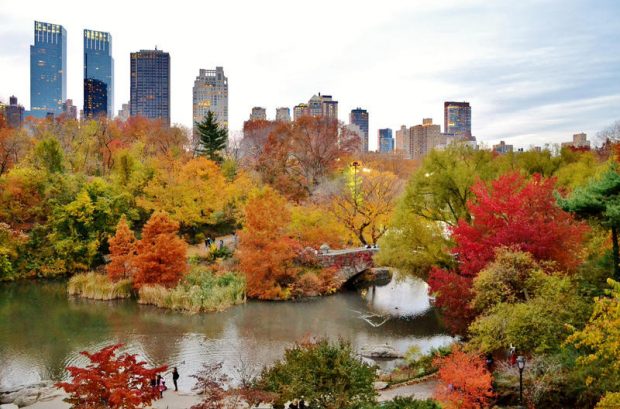
One of seven bodies of water in Central Park, Pond can be found just off Central Park South between Fifth and Sixth Avenues.
Black cherries, oaks, gray birches, and Tupelo trees surrounding the pond provide a vivid backdrop for the fabulous, stone Gapstow Bridge and ducks that swim in the pond.
Like us on Facebook for more stories like this: